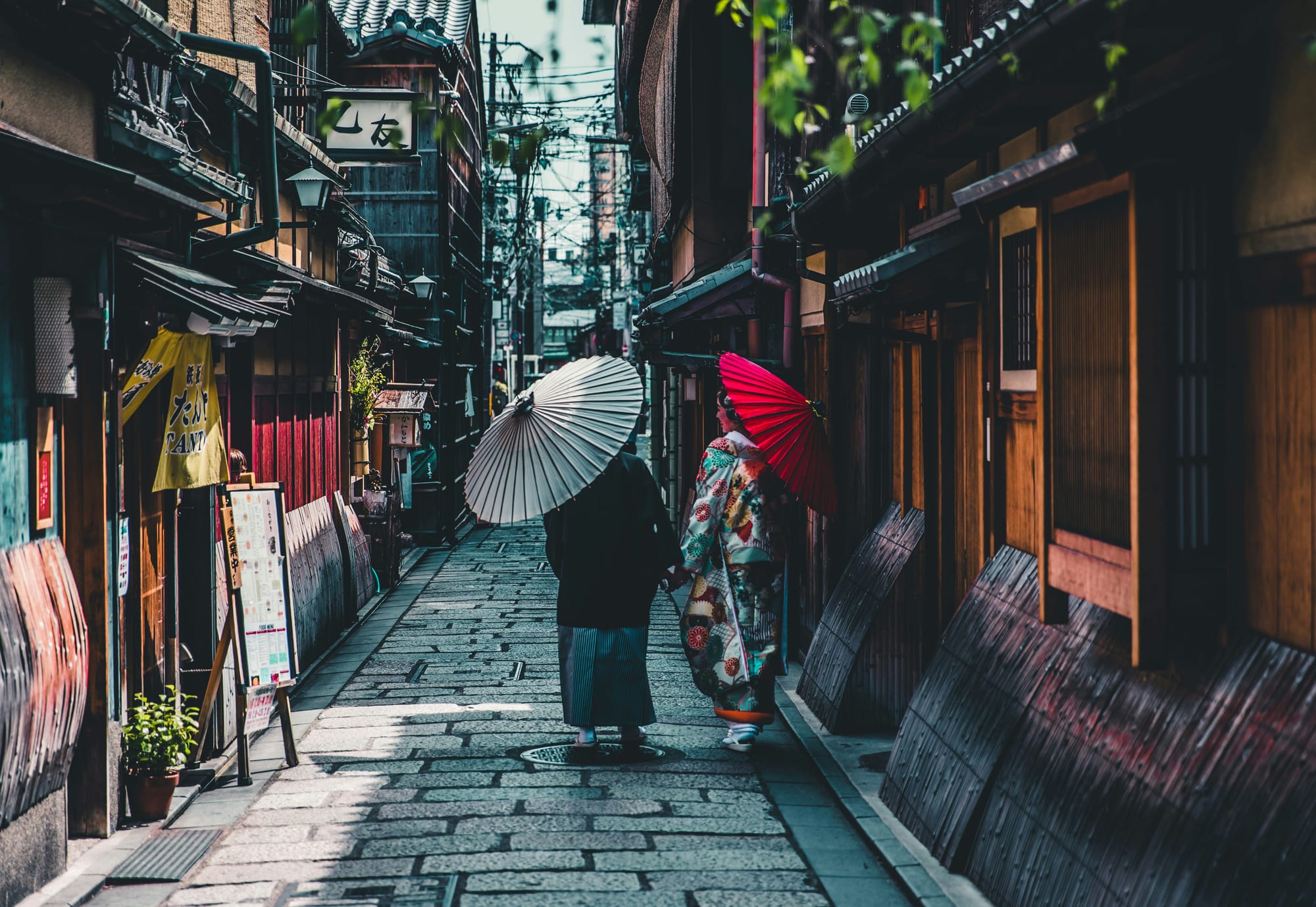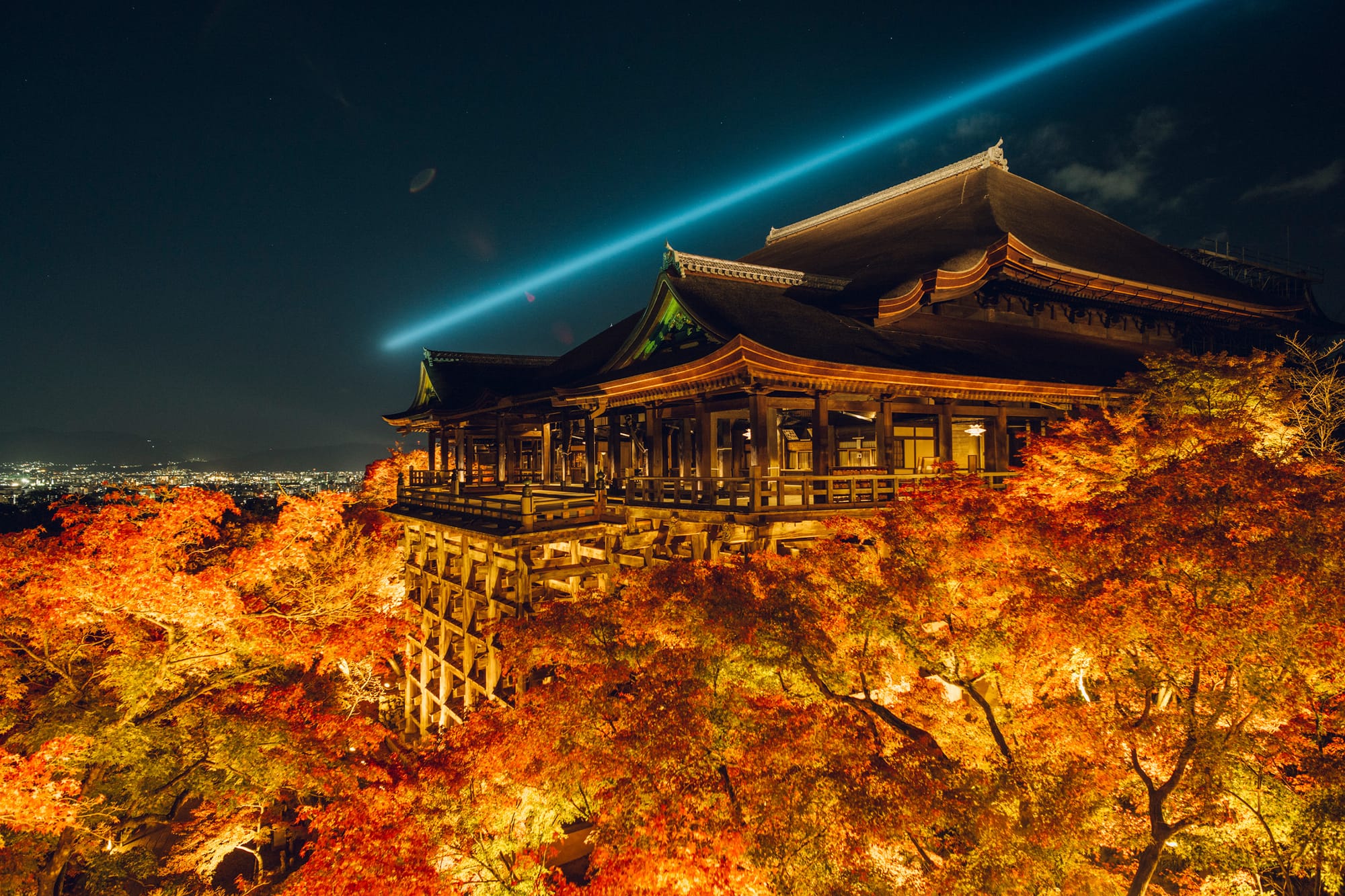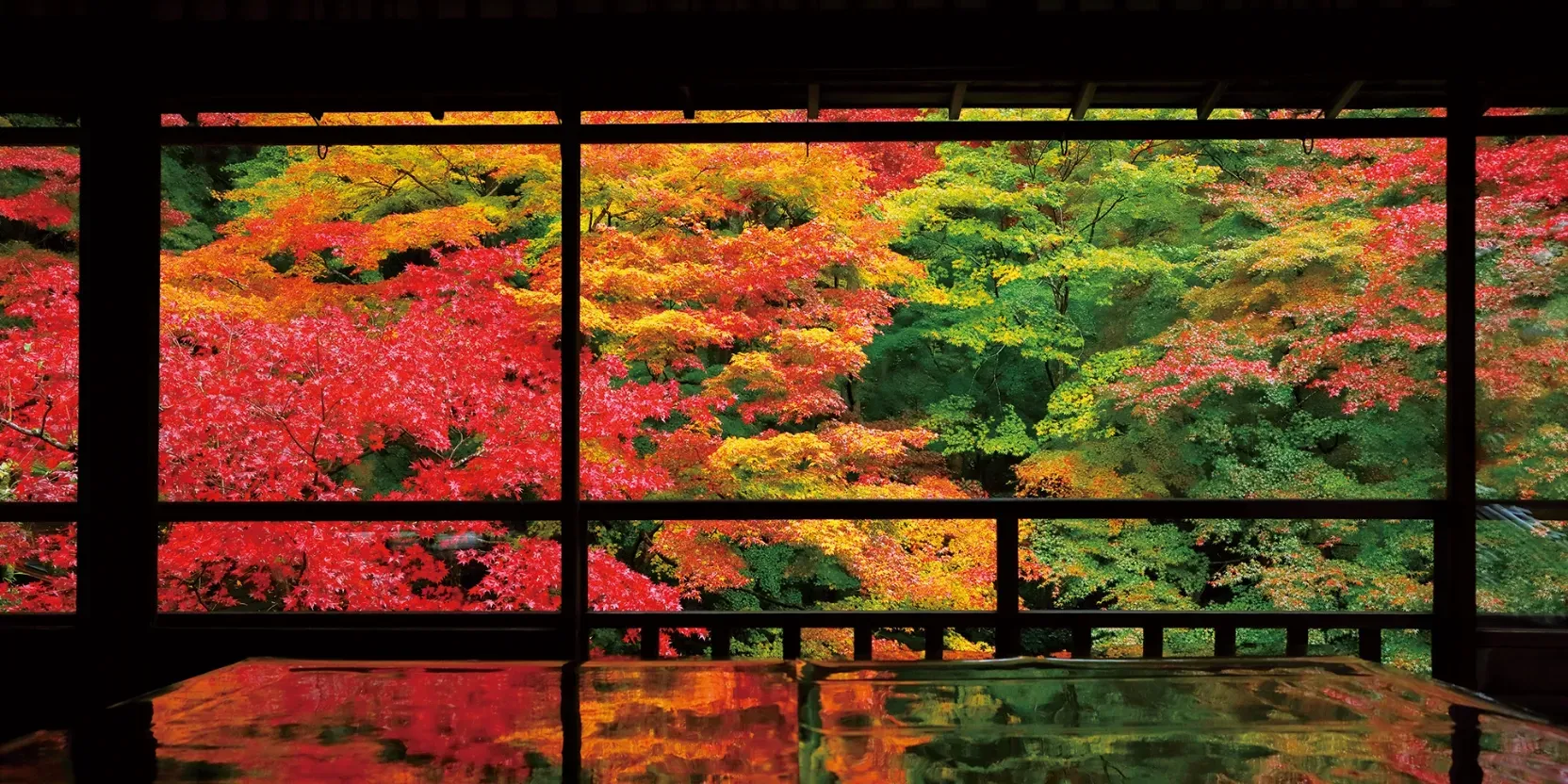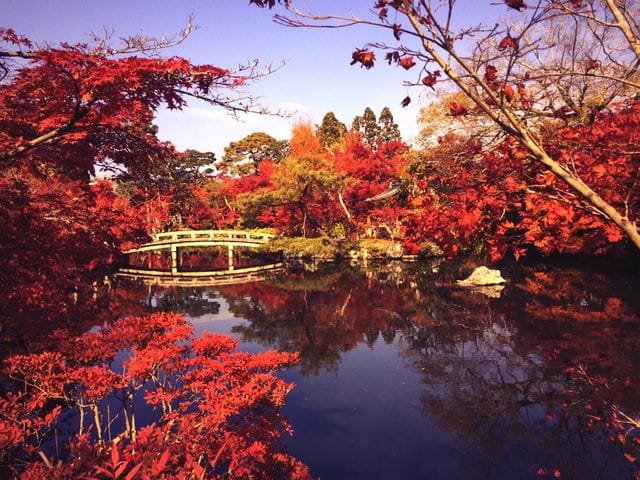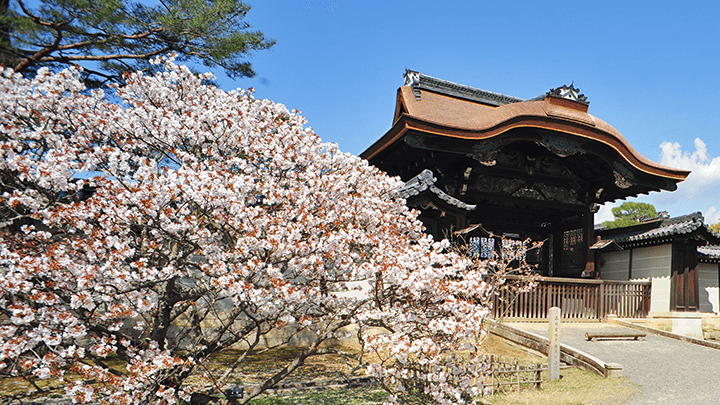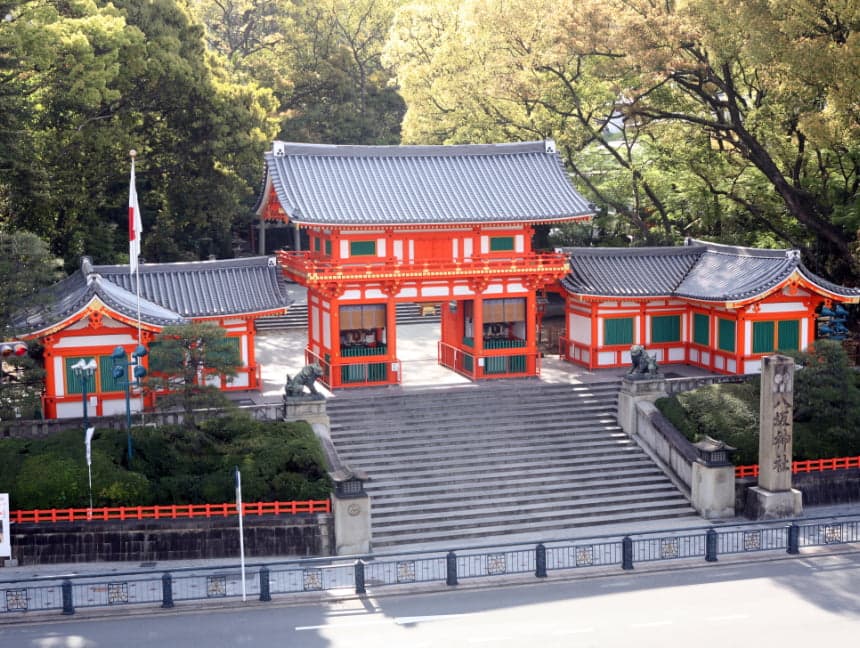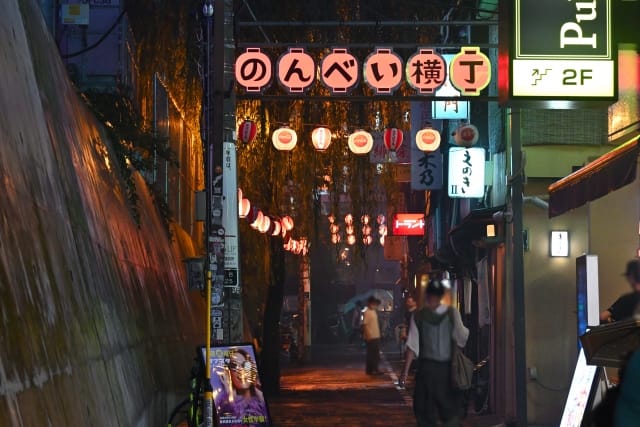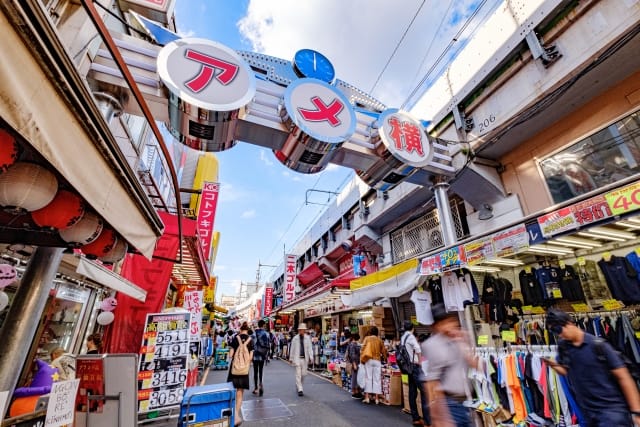Top 9 Best Temples and Shrines; Must-Visit for First-Timers!
I visited Kyoto several times between August and October 2024. I'm updating this article to share the new charms of Kyoto I discovered and to recommend the latest spots worth visiting. In this update, I've also included the newest information about Kyoto for 2025.
Another reason for this update is the growing interest in tours that allow visitors to fully experience Kyoto's traditions and culture.
Due to Kyoto's deep history and traditions, first-time visitors often find it challenging to explore the city efficiently while gaining a deeper understanding. This has led to increasing popularity of guided tours like those offered by Magical Trip, where local guides help tourists navigate the city.
Notably, Magical Trip's tour, which was ranked No.1 among all tours on Tripadvisor in 2024, is experiencing high demand in 2025.

For those interested in Kyoto's traditions and culture, we recommend the following tours where you can experience authentic Kyoto tea ceremonies and Zen meditation:
• Kyoto Tea Ceremony & Kiyomizu-dera Temple Walking Tour
• Kyoto Zen Meditation & Garden Tour at a Zen Temple, including a traditional vegetarian lunch
If you love visiting shrines and temples, try the "Fushimi Inari Hidden Hiking Tour" to discover the hidden charms of Fushimi Inari Shrine.
Whichever tour you choose, it's sure to be an unforgettable experience!
Introduction
Kyoto served as the imperial capital of Japan for over 1,000 years, playing a crucial role in the country's history. As a result, numerous temples and shrines that supported the city still exist today. With its traditional landscapes, Kyoto is the place where you can experience the essence of Japan most vividly, making it an attractive city even for me as a resident.
Particularly, temples and shrines are deeply engraved with centuries of history, making them ideal places to learn about Japanese traditional culture. In this article, I'll introduce you to a selection of the finest temples and shrines around Kyoto.
Fushimi Inari-taisha Shrine, famous for its Senbon-torii, is a must-see sightseeing spot when visiting Kyoto.
In fact, did you know that there are two different courses around Fushimi Inari Taisha: a 30-minute course that allows you to see only the must-see spots, and a 2-hour course that allows you to fully enjoy the attractions of the area?
For more details, please see below!
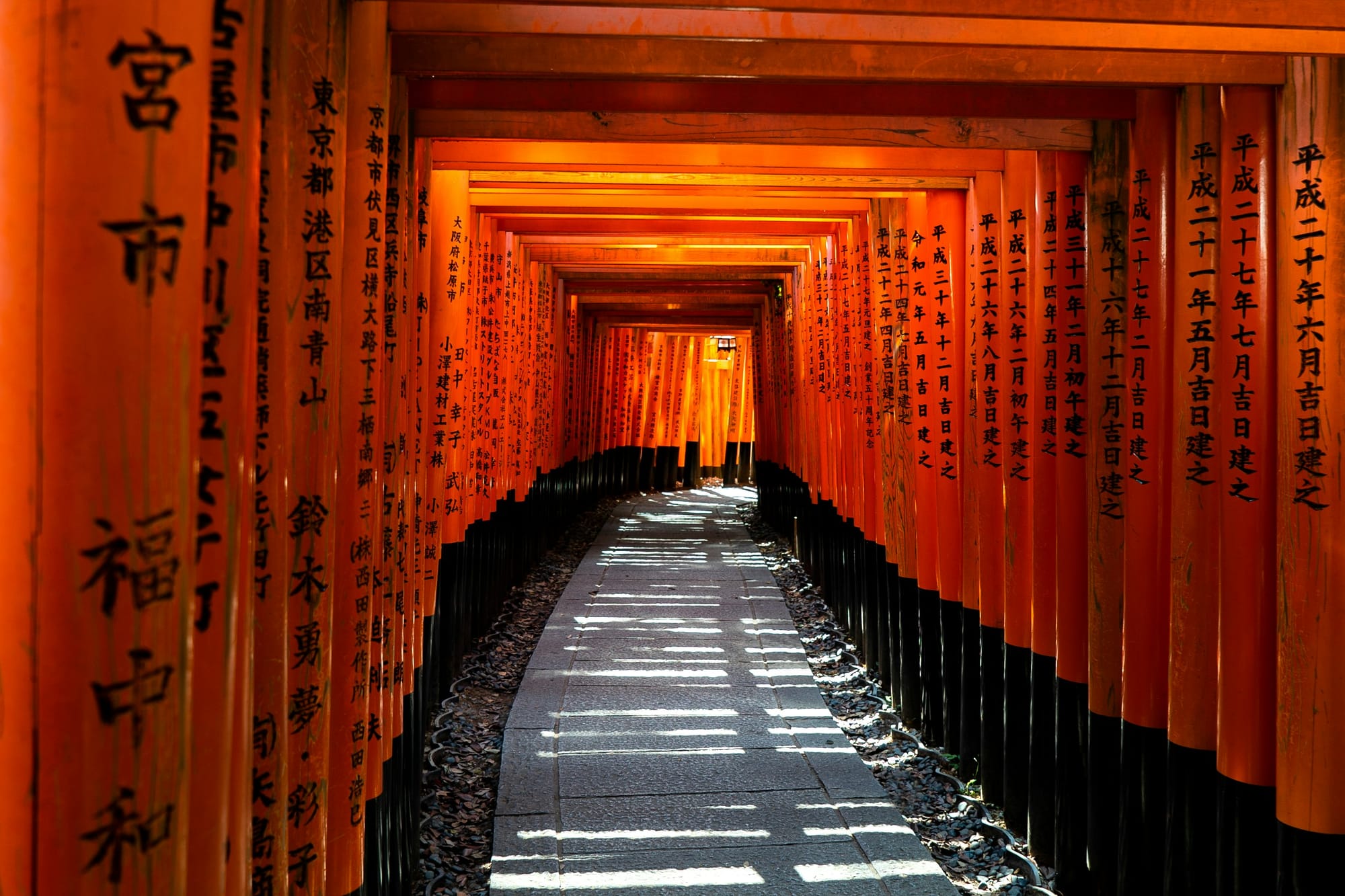
Why Temples and Shrines Are Still Cherished
Temples and shrines are deeply intertwined with Japanese culture. From visiting shrines for New Year's prayers to holding wedding ceremonies, they are inseparable from Japanese life. Especially for Kyoto residents living in a traditional environment, temples and shrines hold a special significance. We are very proactive in preserving traditions and culture.
Personally, I make it a habit to pray at a nearby shrine every morning before heading to work. Some Kyoto residents even consider Kyoto to be the de facto capital of Japan, highlighting how important traditional culture is to us. In Kyoto, many temples and shrines are supported and carefully preserved by citizens who strive to maintain these traditions.
Three Must-Visit Temples and Shrines in Kyoto
Kiyomizudera Temple
source:Official website
Among the many temples and shrines around Kyoto, Kiyomizudera holds a special place in the hearts of Kyoto residents, including myself who has visited numerous times. Founded in 778 during the Nara period, it has been cherished as a symbol of Kyoto for over 1,200 years. Registered as a UNESCO World Heritage site, most of its buildings are designated as Important Cultural Properties of Japan. Don't miss drinking the water from Otowa Waterfall, which is said to bring benefits in love and longevity!
The highlight of Kiyomizudera is the view of Kyoto city and the beautiful nature in all four seasons from the temple's stage. It's especially popular during cherry blossom season in spring and autumn foliage season.
The night illuminations held each season offer breathtakingly beautiful scenes that words can't describe. For the best photo opportunity, head to the Okunoin Hall, where you can capture both the main hall of Kiyomizudera and the Kyoto cityscape in one frame.
Access: 20-minute walk from Kiyomizu Gojo
Hours: 6:00 AM - 6:00 PM
Closed: Never
Phone: 075-551-1234
Official Website
Admission: 500 yen
If you are interested in Kiyomizu Dera Temple, check the article below! I summarized in more details and how I felt there.

Kinkakuji Temple (Golden Pavilion)
source:Shokoku-ji
Kinkakuji was built in 1397 as a villa for the shogun Ashikaga Yoshimitsu. Its beautiful gold-leaf covered building is one of the most famous cultural properties in Kyoto. I still remember being overwhelmed by its presence when I first saw it.
Although Kinkakuji was once destroyed by fire, it was rebuilt in 1955 and has been carefully preserved since then. The temple is designed to represent the Buddhist ideal world, with every aspect of the garden and buildings reflecting this ideal.
The main attraction of Kinkakuji is the Shariden (reliquary hall), with its second and third floors covered in gold leaf. While its official name is Rokuonji, it became known as Kinkakuji (Golden Pavilion) due to the striking golden exterior of the Shariden. The pavilion is surrounded by a pond, which beautifully reflects the inverted image of the golden structure.
One of Kinkakuji's charms is that you can enjoy different scenery in each season. Winter is particularly recommended, as the gold color contrasts breathtakingly with the accumulated snow.
Access: 3-minute walk from "Kinkakuji-michi" bus stop
Hours: 9:00 AM - 5:00 PM
Closed: Never
Phone: 075-461-0013
Official Website
Admission: 500 yen
If you are interested in Kinkakuji, check the article below! I summarized in more details and how I felt there.

Fushimi Inari Taisha Shrine
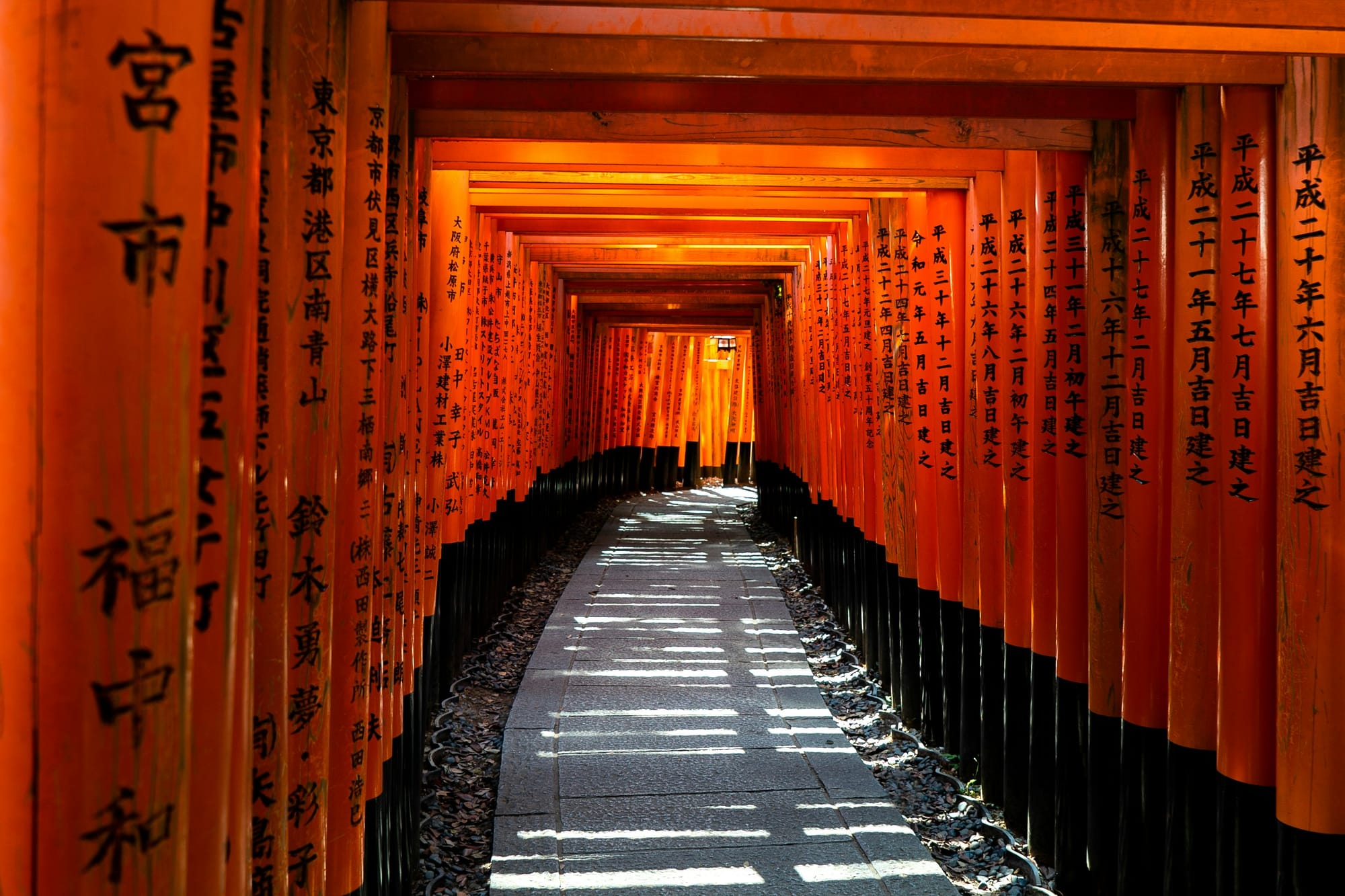
Fushimi Inari Taisha is the head shrine of approximately 30,000 Inari shrines across Japan, making it a very important cultural property. Since its establishment in 711, it has been widely worshipped for over 1,300 years as a deity of prosperity in business and bountiful harvests.
When visiting this place, the first thing that catches your eye is the scenery of countless red torii gates known as Senbon Torii. As you pass through these gates that seem to stretch on endlessly, you'll experience a strange sensation of heading towards another world. Don't forget to take photos at these incredibly photogenic torii gates!
Fushimi Inari Taisha is also a hidden gourmet spot. In honor of Oinari-san, the deity of Inari shrines who brings abundant harvests, traditional rice-based snacks called "Oinari-san" are sold here. Try these as a snack between sightseeing!
Access: 5-minute walk from JR Nara Line "Inari" Station or Keihan Main Line "Fushimi Inari" Station
Hours: 24 hours
Closed: Never
Phone: 075-641-7331
Official Website
Admission: Free
If you are interested in Fushimi Area, check the article below! I summarized in more details and how I felt there.

If you are interested in Fushimi Inari Taisya Shrine, check the article below! I summarized in more details and how I felt there.

Best Temples and Shrines to Visit During Autumn Foliage Season
Rurikoin Temple
source:Official website
Rurikoin is a Buddhist temple nestled at the foot of Mt. Kurama in northern Kyoto. Built from the late Taisho to early Showa period by craftsmen and gardeners representing modern Kyoto, it's an architecturally fascinating building.
Popular as a place to experience the Buddhist world away from the hustle and bustle of the city, Rurikouin is usually closed to the public but opens for special viewing periods in spring, summer, and autumn. The view from the second floor is particularly spectacular. In spring and summer, greenery spreads across the expansive windows, while in autumn, the fall foliage creates a stunning vista, beautifully reflected on the black lacquered table in the room.
Place your camera on the table to capture a shot that looks like modern art. While beautiful scenery can be enjoyed in any season, the autumn foliage is indescribably beautiful.
Access: 10-minute walk from "Yase-Eki-Mae" bus stop
Hours: April 13 - June 16, 2024; July 13 - August 18, 2024 (planned); October 1 - December 10, 2024 (planned), 10:00 AM - 5:00 PM
Closed: Outside the above periods
Official Website
Admission: 2000 yen
Eikando Zenrinji Temple
source:Jalan net
Eikando, officially named Zenrinji, was founded in 853 and has long been favored by cultural figures as a place for spiritual learning. It houses numerous culturally important treasures, including the National Treasure "Yamagoe Amidazu" painting, which exudes a unique aura that captivates viewers. The unique "Mikaeri Amida" Buddha statue, which faces sideways, is also a must-see cultural property.
Eikando has long been known as "Momiji no Eikando" (Eikando of Autumn Leaves) for its famous autumn foliage. With over 3,000 maple trees planted, every view is picturesque.
During the autumn foliage season, many places in Kyoto hold illumination events, but Eikando's illuminated autumn leaves are exceptional. The contrast between the pitch-black pond and the red and yellow maple leaves reflected in it is so beautiful it can bring tears to your eyes.
Access: 3-minute walk from "Nanzenji Eikandomichi" bus stop or 15-minute walk from Keage Station on the Tozai Subway Line
Hours: 9:00 AM - 5:00 PM
Closed: Never
Phone: 075-761-0007
Official Website
Admission: 600 yen
If you are interested in Autumn Season in Kyoto, check the article below! I summarized how and where you can enjoy Autumn Season in Kyoto as much as possible.
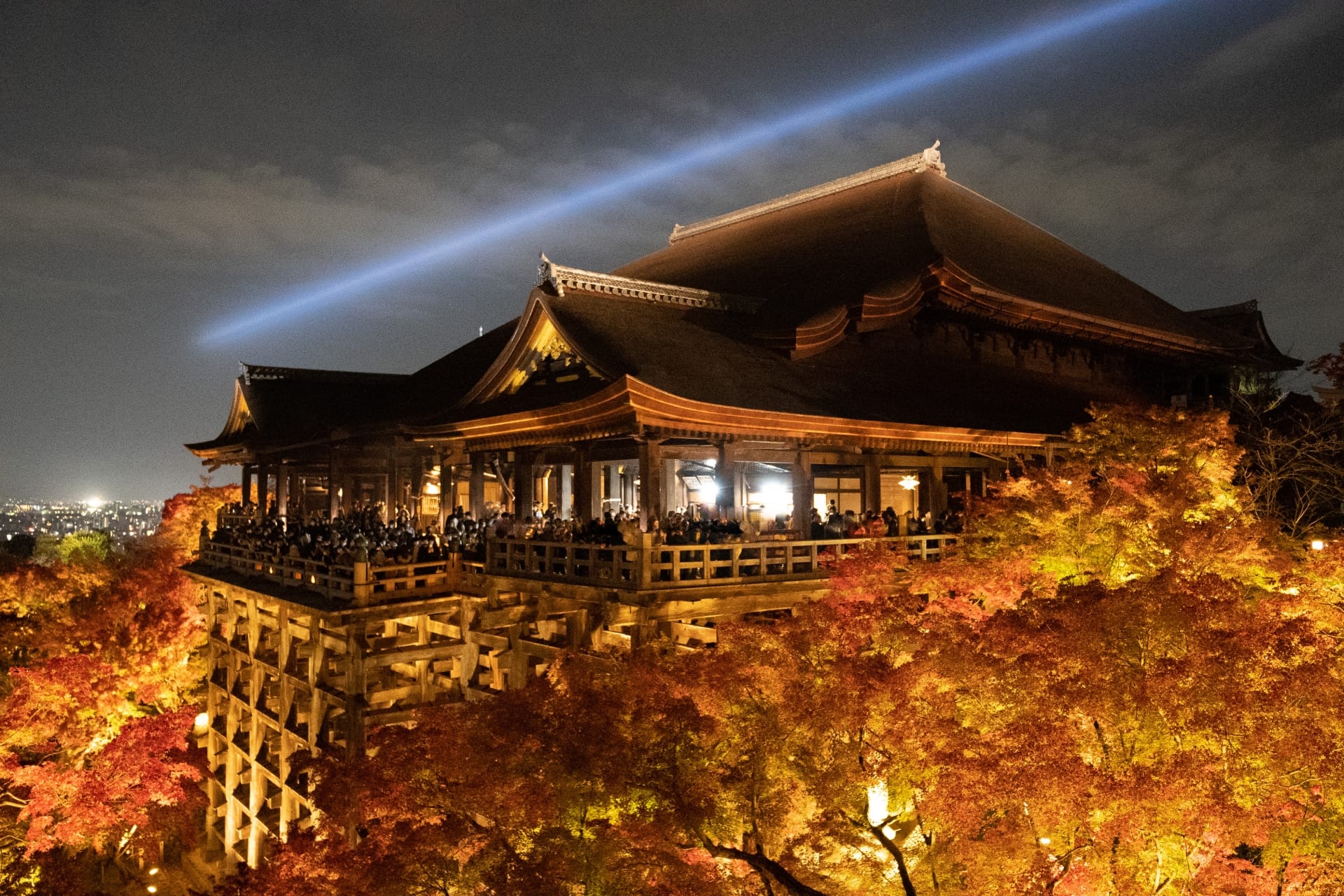
Best Temples and Shrines to Visit During Cherry Blossom Season
Ninnaji Temple
source:Official website
Ninnaji, built in 888, is an important temple of the Shingon sect and was once headed by imperial family members. The vast temple grounds house many attractions, including the National Treasure Kondo Hall, which enshrines the Amida Triad, and the Important Cultural Property five-story pagoda. The two gardens are particularly highly regarded worldwide, and Ninnaji is registered as a UNESCO World Heritage site. My favorite pastime is to relax while gazing at the south garden covered in white sand.
In spring, Somei Yoshino cherry trees bloom in front of the Kondo Hall, while weeping cherry trees blossom in front of the bell tower. The most famous are the late-blooming Omuro cherry trees planted on the west side beyond the central gate. These cherries have long been beloved and often appear in traditional Japanese waka poetry.
Entering the cherry blossom walkway, you can take unique photos with the five-story pagoda in the background, where the short Omuro cherry trees look like pink clouds. Even if you miss the general cherry blossom season, you might still catch the blossoms at Ninnaji!
Access: 10-minute walk from JR Sagano Line "Emmachi" Station or 3-minute walk from Randen "Omuro Ninnaji" Station
Hours: March-November 9:00 AM - 5:00 PM, December-February 9:00 AM - 4:30 PM
Closed: Never
Phone: 075-461-1155
Official Website
Admission: 800 yen
Hirano Shrine
source:Kyoto Travel Navi
Hirano Shrine, moved from Nara when the capital was relocated to Kyoto in 794, is known as one of the most prestigious shrines in Japan. The main shrine, designated as an Important Cultural Property, is divided into four halls, each enshrining different deities. Don't forget to touch the "Suehirogane" sacred stone near the worship hall, which is said to ward off misfortune!
While Hirano Shrine is valuable as a cultural property, its main attraction is the cherry blossoms. With about 60 varieties and 400 cherry trees planted in the grounds, you can enjoy cherry blossom viewing for an extended period, from early to late-blooming varieties.
For the best photo opportunity, head to the area just inside the torii gate at the entrance. The vibrant vermilion torii contrasts beautifully with the pale pink flowers, with the main shrine visible in the background. If you're in Kyoto on April 10th, don't miss the Ouka-sai (Cherry Blossom Festival) held on that day!
Access: 7-minute walk from Randen "Kitano-Hakubaicho" Station or 3-minute walk from "Kinugasa Koumae" bus stop
Hours: 6:00 AM - 5:00 PM
Closed: Never
Phone: 075-461-4450
Official Website
Admission: Free
If you are interested in Spring Season in Kyoto, check the article below! I summarized how and where you can enjoy Autumn Season in Kyoto as much as possible.
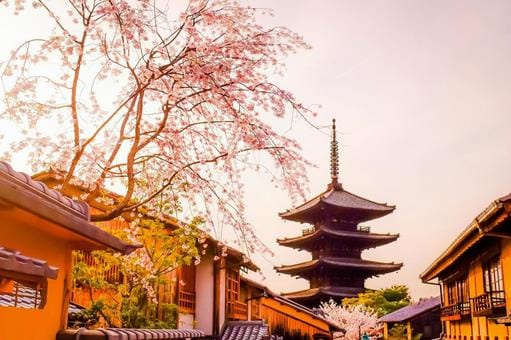
Famous Shrines for Festivals
Yasaka Shrine
source:Official website
Yasaka Shrine, existing even before Kyoto became the capital, is affectionately called "Gion-san" among Kyoto residents like myself.
The shrine grounds enshrine numerous deities, believed to ward off all kinds of misfortunes and bring various benefits. If you're lucky, you might catch geisha performances or koto music in front of the National Treasure main hall. There are countless other attractions, including the "Maiden" dance stage surrounded by numerous lanterns and the vivid vermilion "Nishiroumon" gate.
When thinking of Yasaka Shrine, the first thing that comes to mind is the Gion Festival, one of Japan's three major festivals. This festival, said to have started over 1,000 years ago to ward off epidemics, is a large-scale event lasting a month. For me, the start of the Gion Festival signals the arrival of summer in Kyoto. On July 17th, three mikoshi (portable shrines) carrying deities depart from Yasaka Shrine, tour various parts of Kyoto, and return to Yasaka Shrine on the 24th.
Access: 5-minute walk from Keihan Railway "Gion-Shijo" Station
Hours: 24 hours
Closed: Never
Phone: 075-561-6155
Official Website
Admission: Free
If you are interested in Yasaka Jinja Shrine, check the article below! I summarized in more details and how I felt there.

Shimogamo Shrine
source:Jalan net
Shimogamo Shrine, dating back to before the Common Era, is one of the oldest shrines in Kyoto. The atmospheric grounds house many smaller shrines offering various benefits, but it's particularly popular among young women for its deities of beauty and matchmaking. Of course, I also pray to "become beautiful" every time I visit Shimogamo Shrine!
Shimogamo Shrine is also characterized by its location in a nature-rich area, with the "Tadasu no Mori" forest on its grounds serving as a relaxation spot for Kyoto citizens. There's also a unique fortune-telling method where characters appear on paper when dipped in the pond water.
Every year on May 15th, the Aoi Festival is held. This traditional and fascinating event features a parade of people dressed in Heian period aristocratic costumes, proceeding from the Kyoto Imperial Palace through Shimogamo Shrine to Kamigamo Shrine. You won't be able to resist taking photos of this scene that looks like it's straight out of a historical drama.
Access: 12-minute walk from Eizan Electric Railway "Demachiyanagi" Station or get off at "Shimogamo-jinja-mae" bus stop
Hours: 6:00 AM - 5:00 PM
Closed: Never
Phone: 075-781-0010
Official Website
Admission: Free
Points to Keep in Mind When Visiting Temples and Shrines
Temples are buildings related to Buddhism and house Buddha statues. Monks practice and pray here, and people visit for worship and grave visits.
On the other hand, shrines are Shinto buildings where Japanese deities are enshrined. Priests and shrine maidens perform religious festivals at shrines, and we visit for various purposes such as warding off bad luck, finding love, and praying for good health. The large red torii gates are also icons of shrines.
The etiquette for worship differs between temples and shrines.
Etiquette When Visiting Temples
Before entering the temple grounds, first bow. Then, being careful not to step on the threshold, women enter with their right foot first, while men enter with their left foot.
Before approaching the main hall, it's important to purify yourself. Use the ladle at the water basin near the entrance to scoop water and wash both hands and your mouth.
Upon reaching the main hall, toss some coins into the offering box, bow lightly, and offer a prayer with your hands together. There's no set amount for the offering. Bow once more when leaving the main hall.
Modest attire is preferred, and it's polite to remove hats before entering the grounds. Photography may be allowed outside the buildings, but follow the rules of each temple.
Etiquette When Visiting Shrines
At shrines, bow before passing through the torii gate and avoid walking in the center. The purification method at the water basin is the same as at temples.
At the main hall, first toss in your offering before praying. Using a 5-yen coin is said to bring good luck. (Five yen has the same sound as "Good Relationship" in Japanese) Ring the bell hanging near the offering box, clap your hands twice, bow twice, then offer your prayer. After praying, bow once more before leaving the main hall.
At shrines, you can purchase "omikuji," fortune-telling papers. If you receive a bad fortune, it's customary to tie the paper to a designated place nearby to avoid taking the bad luck home. As with temples, dress modestly and follow the rules of each shrine.
If you are interested in Kyoto's Attractions, check the article below! I summarized how and where you can enjoy Kyoto's Attractions as much as possible.
